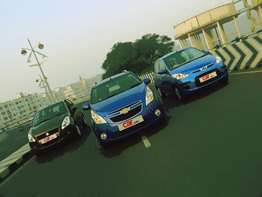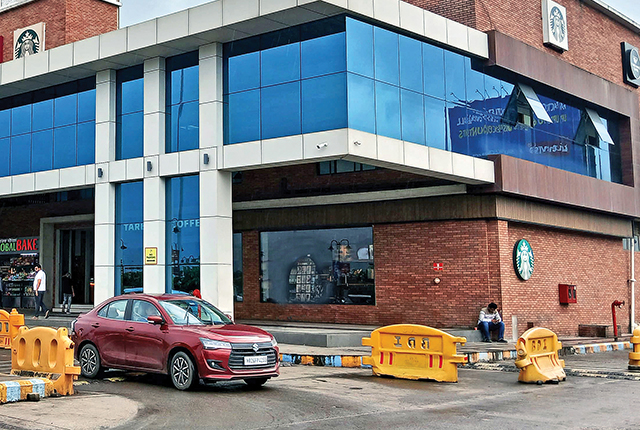 Moving on
Moving on
Driving the Ritz around the city and on the highway shows why Maruti Suzuki is the leading carmaker in India. The Ritz has the most refined engine coupled with the most well sorted gears. Additionally, it is the most powerful car here as it delivers 85PS with a high torque output of 113Nm. But what the Ritz lacks is ride quality and also appears to be stiffer than the other two.
The Chevrolet brat has the best ride quality, not just among the three cars, but in the entire segment. The supreme ride quality also gives the car an advantage in the overall handling. The Beat feels sharp around corners and is a delight to manoeuvre through congested city traffic. The engine feels rev happy and dashes to 100km/h in 14.2 seconds. The Chevrolet engine has a noisy hum which gives a sporty feel, but can be irritating for non-enthusiasts. To squeeze performance out of the Beat, the engine needs to be pushed to high rpms (4000 to 4500). Yes, it appears to be fun, but also results in poor fuel economy of just 13.63kmpl. Not much fun any more, eh? Interestingly, the Ritz has a low optimum power band (between 2000 to 3000rpm), so you can get the maximum out of the car without straining the engine. It’s elementary that the Maruti is also the most fuel efficient, delivering 17.4kmpl overall despite being the heaviest in this shootout at 1005kg. The Beat and the i10 are a good 40kg and 70kg lighter respectively.
The Hyundai is a good mix of the two other cars as it offers a decent fuel economy of 15.12kmpl, has power equal to the Beat and a torque of 112Nm which is just short of the Ritz. The i10 has become so popular because it is quite effortless to drive. The power delivery is smooth and the car offers a comfortable ride, however, it feels comparatively less dynamic and has a vague steering response. The i10’s gear knob is located on the centre console like the Ritz and shifting in urgency is a breeze. The Beat has the gear stick in the conventional location and changing from third gear to forth ends up too far behind. Riding on the widest set of tyres, the Ritz dominates this round with its crisp drive and claims its first but critical win.
 So, who’s the winner?
So, who’s the winner?
Like I mentioned in the beginning, it’s not that easy. The Hyundai i10 has been dominating this segment because of its practicality in providing space, performance and efficiency. The car’s solid build quality, excellent engineering and Hyundai’s good service network makes it an obvious choice for families across India. But this is also one of the problems as its becoming common. Even with a price tag of Rs 5.46 lakh (on-road, Pune for the Asta variant), the car does not have tubeless tyres or alloy wheels or the 60:40 split rear seats which have become standard in other models of this segment. The easy to spoil beige interiors are of no help either.
The Ritz has the best fuel economy and better power and torque. No other carmaker can come close to Maruti’s dealership reach and after sales service. No other car brand can boast of such high resale values either. So the Ritz is the best overall car. There I’ve said it, but (yes, there is still room for a but) although it is the most expensive, the car doesn’t offer small albeit important features like a day-night driving RVM, not enough pockets for storage, etc. Most importantly, it is definitely not the best looker. The Ritz remains the most practical of the three with a super fuel economy of 17.4kmpl.
Let’s talk about the new kid on the block. The Beat looks simply smashing for the price. It has an impressive ride quality and handling that has set new standards in the segment. Even its cabin design, dashboard and futuristic instrument console have set a new benchmark. GM is offering a three-year or 100,000km warranty which happens to be the best in the class. And finally the knockout punch – the Beat is almost Rs 50,000 cheaper than the i10 and the Ritz. This could be an introductory price, but still is a significant savings especially in this price sensitive segment. The Beat makes for the best value for money option in this class. You can save 10 percent by purchasing a Beat and not spend a penny for the next three years (that’s roughly additional savings of another Rs 1 lakh) and in that time, hopefully you’ll be ready to upgrade to a sedan.






















Leave a Reply